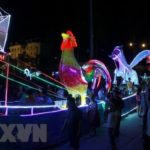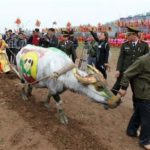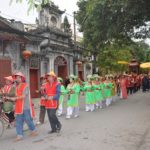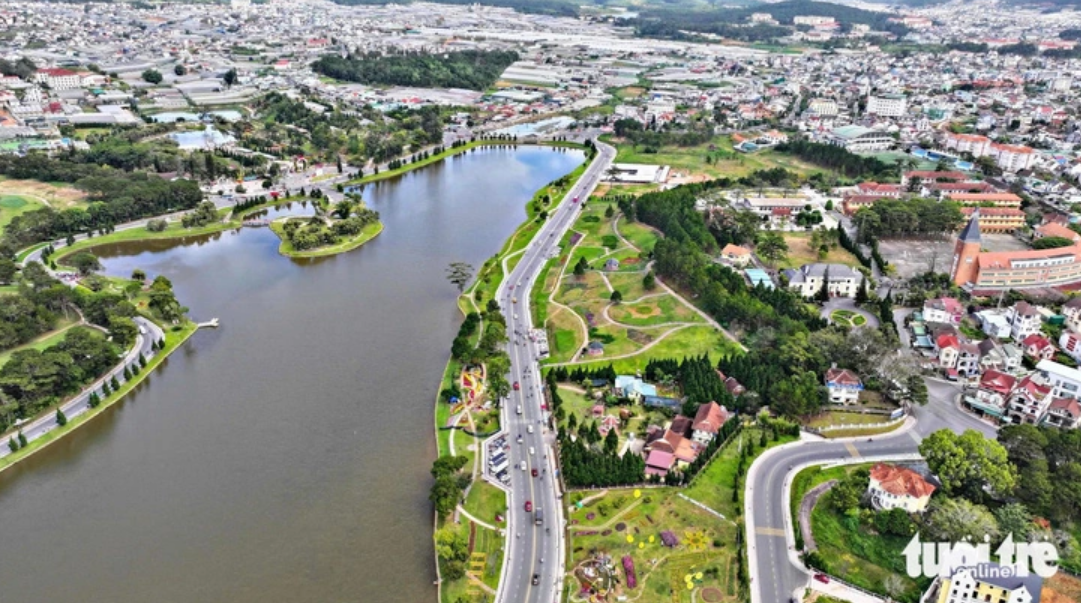Hanoi, once a war-ravaged city, has undergone multiple administrative reorganizations to emerge as a thriving and vibrant metropolis. It stands today as Vietnam’s foremost political, socio-economic, and cultural hub, playing a pivotal role in the country’s overall progress. Despite its modern transformation, Hanoi remains committed to preserving its rich historical and cultural heritage, embodying the perfect amalgamation of tradition and progress.
After 15 years of administrative boundary adjustment under Resolution No. 15, Hanoi intends to develop the cultural industry as a vital economic sector, fostering the growth of other sectors by the end of the current decade.
Huge potential
Hanoi has established diplomatic relationships with over 100 capitals and cities around the world. The capital’s efforts in fostering people-to-people foreign relations have greatly contributed to enhancing exchanges and understanding between the residents of Hanoi and those from numerous cities and countries.
Since 1999, Hanoi has been honored as one of the five cities from five continents to receive the prestigious title of “City for Peace” from UNESCO. This recognition acknowledges Hanoi’s significant contributions towards promoting peace and its adherence to UNESCO’s guidelines on community equality, urban development, environmental sustainability, cultural enrichment, education, and support for younger generations.
| Hoan Kiem District from a bird’s eye view. Photo: VNA |
In 2019, Hanoi achieved the status of an official member of UNESCO’s Creative Cities Network, marking a significant milestone twenty years since its inception.
According to Dang Huong Giang, the Director of the Hanoi Department of Tourism, the tourism industry in the capital has emerged as a leading sector of Hanoi’s economy. Following 15 years of territorial reorganization, it has successfully established its own unique brand by capitalizing on the city’s inherent strengths.
According to Giang, Hanoi has been recognized as one of the top 10 fastest-growing tourist cities worldwide, as well as the 15th among the global top 25 tourist destinations.
In the midst of the global Covid-19 pandemic, the tourism industry in Vietnam, including the vibrant city of Hanoi, faced significant challenges in 2020 and 2021. The restrictions and safety measures implemented to control the spread of the virus resulted in a significant decline in tourist arrivals.
However, with the situation gradually improving and the pandemic under control, the city government of Hanoi took proactive measures to revive the tourism sector. Recognizing the importance of the domestic market, efforts were directed towards stimulating demand and restructuring tourism products. As a result, 10 new tourist attractions have been acknowledged by the city government, further enhancing the tourism landscape.
With a renewed focus on bringing vitality back to the industry, Hanoi’s tourism sector has embarked on a journey to develop and promote innovative products. These efforts aim to create an enticing and memorable experience for both local and international visitors, infusing a fresh and vibrant atmosphere into the tourism landscape of the city.
In the past 15 years, Hanoi has made significant progress in enhancing pedestrian accessibility. Currently, the city boasts five pedestrian streets, located at prominent areas such as Hoan Kiem Lake, Trinh Cong Street, Thien Quang Lake, Son Tay Town, and Ngu Xa Street. Furthermore, the authorities are actively exploring the possibility of opening two additional pedestrian streets in Gia Lam District and Ba Dinh District. This continued effort reflects Hanoi’s commitment to promoting pedestrian-friendly environments and fostering a vibrant urban experience.
In the first six months of 2023, the total number of tourists to Hanoi reached 12.33 million, indicating a significant 42% growth compared to the same period in 2022.
| Today, Hanoi is a modern and dynamic city and one of the two major political, socio-economic and cultural centers of Vietnam. Photo: VNA |
In reference to the cultural industry, Dinh Tien Dung, Secretary of the Hanoi People’s Committee, expressed that Hanoi is the pioneer in adopting a targeted resolution to advance the cultural industry. This highlights the paramount significance of the cultural industry in facilitating the enduring progress of the capital city in the immediate future.
The resolution aims to establish the capital’s cultural industry as a significant economic sector by 2025, thereby generating a new impetus for economic, cultural, and social progress.
The cultural industry in the capital will become a leading economic sector by 2030, greatly impacting the growth of other industries. Hanoi stands out among cities with its well-established cultural industries, renowned brands and products, and impressive regional competitiveness. It holds significant influence as a “Creative City” in Southeast Asia.
According to Dung, the city of Hanoi has set ambitious goals to boost the cultural industry’s impact on its Gross Regional Domestic Product (GRDP). By 2025, Hanoi plans to increase the cultural industry’s contribution to GRDP to 5%, and further increase it to 8% by 2030. Moreover, the city aims to generate more revenue from cultural businesses, with a target of contributing approximately 10% of Hanoi’s GRDP by 2045.
Over the next five years, Hanoi will prioritize the development of various cultural industries that leverage the city’s unique advantages and potential. These industries include cultural tourism, handicrafts, performing arts, cinema, design, culinary arts, entertainment software and games, advertising, architecture, photography and fine arts, fashion, TV and radio, and publishing.
Cultural Industry Policies
In an effort to promote the growth and development of cultural industries, the Hanoi government has implemented initiatives aimed at raising awareness within the community.
“The cultural industry is an emerging economic sector that demands strategic measures, tailored mechanisms, and effective policies to propel its growth and establish it as a leading sector in our nation,” stated Do Dinh Hong, Director of the Hanoi Department of Culture and Sports.
| A mural in Phuc Tho district. Photo: Kinhtedothi.vn |
He recommended the implementation of a comprehensive policy for the cultural industry, emphasizing the importance of strategic investment in art, science, and technology. The key focus should be on nurturing and developing human resources, as they are the utmost critical factor in this endeavor.
Hong stated that the city prioritizes the development of a comprehensive network of cultural establishments, both domestic and international cultural exchanges, as well as hosting numerous noteworthy and exceptional art and cultural events. Furthermore, the city remains committed to conserving and promoting the rich traditional cultural heritage amassed over millennia.
According to Dang Huong Giang, the tourism industry is currently prioritizing efforts to enhance the destination’s brand image, develop distinctive and captivating new tourism offerings, implement a successful digital transformation initiative, and leverage the rich historical and cultural heritage found in both central and suburban areas of Hanoi.











